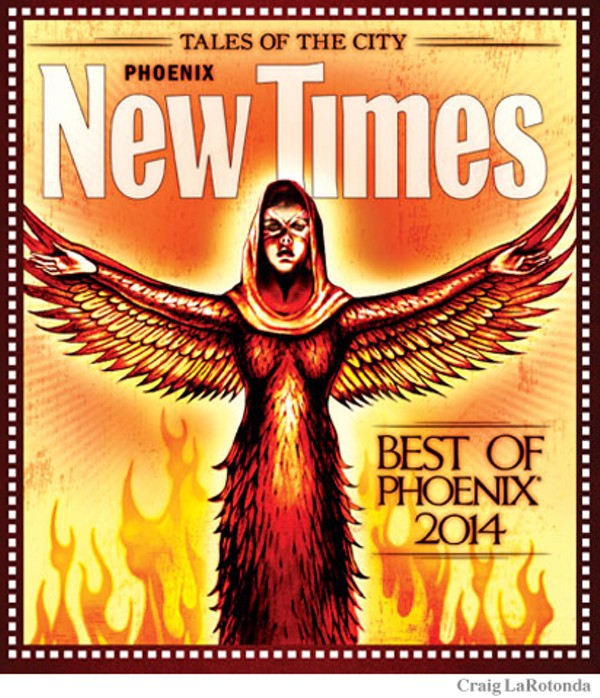It might be the single most ubiquitous antique-shop item in the history of vintage resale. The West Bend Penguin Hot and Cold Server (known to collectors at the Penguin Ice Bucket) was a globe-shaped kitchenware server, embossed with a clutch of penguins marching around its perimeter and perfect for ice cubes on the bar or rolls hot from the oven. Manufactured by the West Bend Aluminum Company in 1941 and available throughout the early '70s, the Penguin came in three metal finishes: chrome-plated steel, brushed aluminum, and solid copper. The chrome version, available with three different knob and penguin-wing-shaped handle options (wood, black Bakelite, and the more rare red Bakelite) was the most common.
The Penguin, a popular staple in many households for decades, can be found in nearly every antiques store in the country — but no more so than in Phoenix, where there appear to be more Penguins per resale square foot than in any other city. Why?
The story goes that, when West Bend ceased manufacturing of the Penguin in 1971, the leftover stock was sold to a man named Herman Fern. Herman, a former West Bend sales rep who'd retired to Phoenix, reportedly bought up all the leftover Penguins, then set about selling them, door to door, all over the Valley of the Sun. More than one local remembers Herman, in a three-piece suit, demonstrating the marvels of a shiny silver globe that keeps things both hot and cold!
When Herman died, his family reportedly found a stash of mint-in-box Penguins that they immediately sold to a Phoenix-based mid-century dealer, who began reselling them to local antique mall dealers. Thus, the inordinate number of shiny round chrome ice buckets (great for keeping rolls warm!) all over the Valley.
Next time you see a Penguin, think of Herman Fern.





